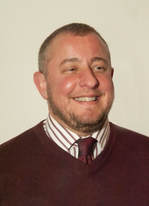
by Iain Stanford
Over the last several weeks, the blogosphere and Facebook have been alive with different opinions, questions and concerns about the various resolutions regarding marriage equality in The Episcopal Church. As I read the various arguments, I keep wondering if people realize that we already have same sex couples in The Episcopal Church who were married using the service for Holy Matrimony in the Book of Common Prayer. Let me explain.
At the 77th General Convention of the Episcopal Church in 2012, the church spoke loudly in support of transgender people as full members of our Church by adding gender identity and gender expression to the non-discrimination canons. As a trans person, though, the canons for marriage and the use of the BCP can become a bit, well, surreal.
Take for example the fictional couple of Jim and Francine. On their day, they walk through the red doors and up the aisle, the celebration begins with the words from the BCP, “Dearly Beloved: We have come together in the presence of God to witness and bless the joining together of this man and this woman in Holy Matrimony.” (BCP 423) And a little later, the priest pronounces, “they are husband and wife.” (BCP 428) Now several years go by, and Francine slowly acknowledges all those feelings when it comes to gender. All her life, people have asked, “are you a girl or boy?” She talks to friends, therapists, and yes, even her priest. Eventually, she knows that God is calling her to move forward, to become Francis. She does! After transition, they are now Jim and Francis. They live into what it means to be a same sex couple in society. And yes, they are still married in the eyes of the Church.
I can hear some people say, “But they came to the altar like any other heterosexual couple.”
Which begs the question: what is the connection between the outward and visible sign or signs of gender and marriage?
The shift here is not a theological one. It is not about Augustine’s theology of the goods of marriage or even Elizabeth Stuarts’ theology of gay and lesbian relationships as “just friends.” The shift is my physical body. My negotiation of gender has shifted from the outward and visible sign of a woman to that of a man, more specifically a trans man. My own sense of gender exceeds binary definition. I own my full gender history. My story, while common in trans communities, is not as well known outside of those circles. I am proud of the ways I participated in breaking down barriers for women in the 1980s, even if only in small ways. I was one of the few women who studied engineering in those years, and the first to be elected president of my university’s engineering honorary. Today, I live and move mostly as just another short white guy. To know me is to understand that I am the sum of all my years.
To my mind, the experience of transgender people in the Church reveals a crack in our current practice. The church is invested first and foremost in the simulacra of heterosexuality. It upholds heteronormativity:
• One is born male, grows up to be a man, adheres to masculine gender norms, sexually desires women, and exercises this desire in a monogamous, life long committed marriage, which takes as its aim the procreation of children.
• Or one is born a female, grows up to be a woman, adheres to feminine gender norms, sexually desires men, and exercises this desire in a monogamous, life long committed marriage, which takes as its aim the procreation of children.
Currently access to Holy Matrimony in the BCP requires the outward and visible sign of heterosexuality. Our practice – and our theology for that matter—assumes a stable gender identity that corresponds with assigned birth sex. Neither our practices nor our theology account for the experiences of transgender people, particularly those who understand themselves as having a non-binary gender.
Our current understanding of the human body in terms of sex, gender and sexuality has been shaped by various scientific, medical, and religious discourses over the last century or so. Terms like heterosexuality and its complement, homosexuality, emerge from the work of late 19th century sexologists like Havelock Ellis. These terms give us a new way of describing how humans desire; they do not invent those desires. Similarly, over the last several decades, we have new terms to describe how people live out their genders.
It is time we live into the full acceptance of all gender identities and gender expressions. Marriage is not about body parts. I am here to testify to this as a fact. It is first and foremost a vocation (as "Christian Marriage As Vocation," essay two from the Task Force on Marriage report, argues). It is a call from God for two people to join their lives in service to God, be that for the raising of children or for the uplift of all God’s creation.
Let us not forget: there are married trans Episcopalians who already hold out a glimpse of full liturgical marriage equality to our Church, even as there are other trans Episcopalians newly unable to access it. Now is the time to make full liturgical marriage equality real for everyone.

 RSS Feed
RSS Feed